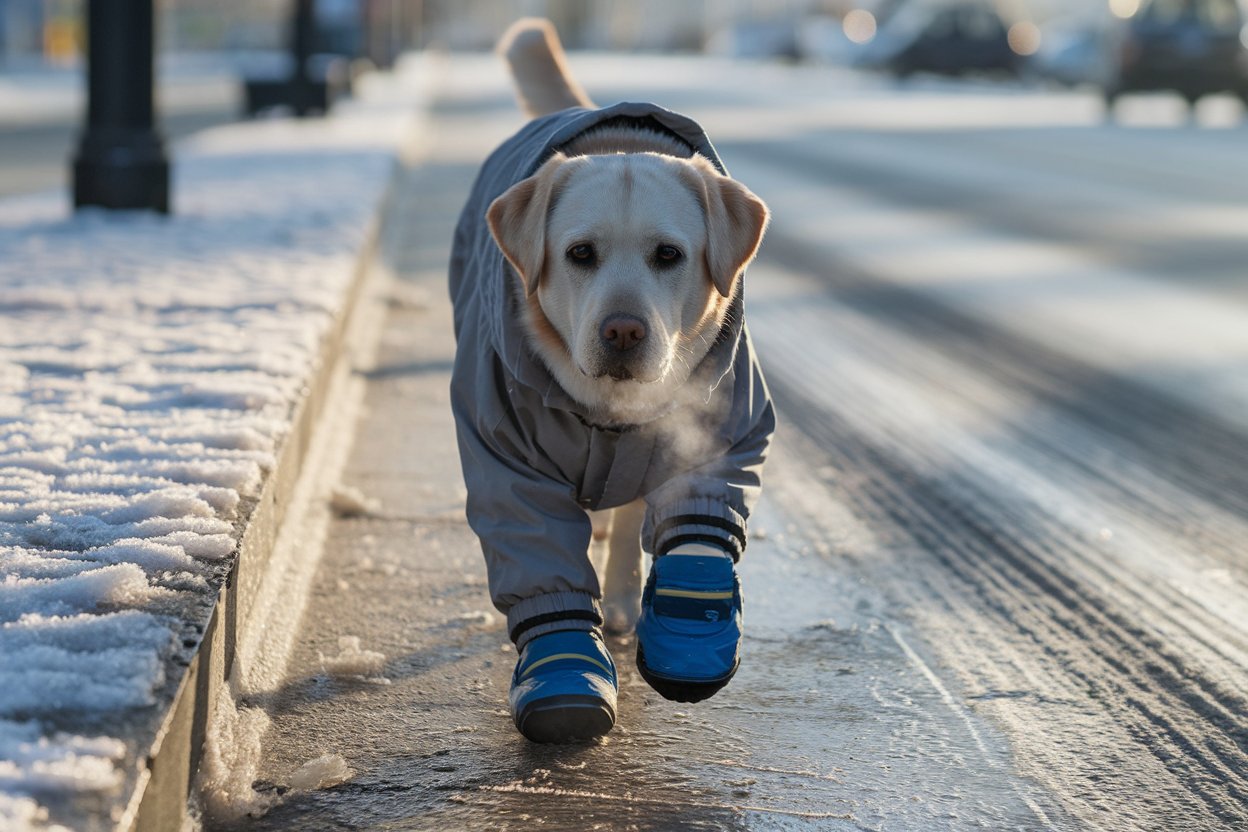
No one wants to see their furry friend struggle in extreme weather. Whether it’s snow, rain, or scorching heat, their paws take the brunt of it. You can protect them better with the right gear.
The best dog booties for harsh weather are durable, waterproof, and well-fitted. They should provide insulation for cold climates and breathable material for hot weather.
When I first tested booties for my dog, I thought one pair would fit all weather conditions. I quickly learned that the right pair depends on the environment. Let me guide you through the options so you don’t have to make the same mistakes.
Should dogs wear booties in hot weather?
Many pet parents worry about their dogs’ paws in the summer, but how much of a concern is it really?
Yes, dogs should wear booties in hot weather if the pavement is too hot to touch. They protect against burns and help prevent dehydration caused by heat exposure.
Hot surfaces can reach dangerous temperatures. Imagine walking barefoot on sizzling asphalt! Booties provide a shield and keep your pup safe when it’s blazing outside.
How do booties protect paws in hot weather?
Booties with heat-resistant soles create a barrier between your dog’s paws and hot pavement. Here’s what to look for:
- Material: Look for lightweight, breathable fabric.
- Design: Adjustable straps for a snug fit.
- Extras: Reflective elements for visibility in low light.

Practical tips for hot-weather booties:
- Test the pavement: Place your hand on it for five seconds. If it’s too hot, your dog needs protection.
- Hydrate often: Heat can cause dehydration quickly.
- Check paws regularly: Booties should not cause discomfort.
Do vets recommend boots for dogs?
If you’ve wondered whether dog boots are necessary, you’re not alone. Are they a trend or a must-have?
Vets recommend boots for dogs, especially in extreme weather conditions or rough terrain. They help prevent injuries, burns, and frostbite.
When I first discussed this with my vet, I was surprised by how strongly they advocated for paw protection. Turns out, most paw injuries are preventable with the right gear.
When should you use boots?
- Snow and ice: To prevent frostbite and slipping.
- Hot pavement: To avoid burns and injuries.
- Hiking: To protect against sharp rocks and thorns.
What is the best dog paw protection for heat?
The summer heat can be relentless. How can you protect those sensitive paws beyond booties?
The best protection combines heat-resistant booties with paw balm and shaded walks. Together, they minimize heat exposure.
What makes paw balms effective?
Paw balms create a barrier against heat while moisturizing the pads to prevent cracks. Combine them with booties1 for maximum protection. Use paw balms2 to keep your dog's pads safe and healthy.
| Product | Features | Best Use |
|---|---|---|
| Heat Booties | Heat-resistant soles | Hot asphalt |
| Paw Balm | Moisturizing properties | Dry climates |
| Cooling Pads | Breathable material | Indoor relaxation |
Should dogs wear boots in the rain?
Rain can make the ground slippery and muddy, but are boots necessary for wet conditions?
Yes, boots are ideal for rain as they keep paws dry and prevent infections from dirty puddles.
How to choose rain boots:
- Waterproof material: Keeps paws dry.
- Anti-slip soles: Provides better grip.
- Easy-clean designs: Saves time after walks.
What temperature outside is too hot for dogs’ paws?
On a sunny day, surfaces heat up quickly. When is it unsafe for your dog to walk?
Pavement is too hot for dogs if it exceeds 125°F (51°C). At this temperature, burns can occur in seconds.
You can check with the “5-second rule”: Place your hand on the surface for 5 seconds. If it’s uncomfortable, it’s too hot for your dog.
Do dog booties protect from asphalt?
Asphalt is one of the hottest surfaces during summer. Are booties up to the challenge?
Yes, dog booties provide a strong barrier against the intense heat of asphalt, protecting your dog from burns and blisters.
How do I keep my dog cool in the boot?
Booties help, but what about keeping your dog’s overall temperature in check?
Provide shade, water, and avoid midday walks. Cooling vests and mats can also help.
Tips for keeping your dog cool:
- Walk during early mornings or evenings.
- Offer plenty of water breaks.
- Use cooling gear like vests and pads.
How hot is too hot for walking dogs?
When the temperature rises, your dog’s safety depends on your timing and planning.
Avoid walking your dog when temperatures exceed 85°F (29°C) unless you have heat-protective gear.
Conclusion
Dog booties are essential for harsh weather. Whether it’s rain, snow, or scorching heat, they protect your dog’s paws from injuries and discomfort. Choose wisely, and your furry friend will thank you with happy, wagging tails!
-
Dog booties can provide extra protection for dog paws against extreme weather, hot surfaces, or rough terrain. Clicking the link will guide readers to options and tips for choosing the best booties. ↩
-
Paw balms are beneficial for protecting dog pads from extreme conditions like heat or cold while keeping them moisturized. Clicking the link will provide more details on their benefits and usage. ↩








